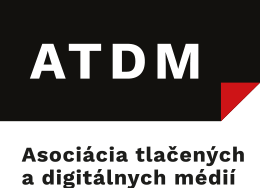Chris Janz has worked in the industry for 25 years, with roles spanning mature and growth businesses and advertising and subscription-funded products. His LinkedIn profile says, “I love building and transforming businesses, applying my experience to organisations of increasing size, impact and scale. Most recently I led Nine’s digital and publishing business, leading 2000+ people across the Financial Review, The Sydney Morning Herald, The Age, 9Now, nine.com.au and group technology, data and digital ventures.” He presently advises a number of media organisations all over the world.
And he has been a great source of knowledge for much of WAN-IFRA’s research work recently, particularly WAN-IFRA’s World Press Trends project. We wanted to pick his brain a bit to see how he feels the current landscape will pan out.
WAN-IFRA: Where do you see publishers’ biggest pain points or challenges heading into what looks like a challenging next 12 months (and beyond)?
Chris Janz: Print is entering its most challenging period. Newsprint is at record highs, the other input costs of printing and distribution – such as electricity and fuel – are through the roof, and longer-term circulation trends continue to affect volumes.
It is becoming harder to sustain printed publications as most publishers have already implemented every obvious efficiency. That’s a problem because, in most countries, digital revenues alone do not support the cost of producing quality journalism at scale.
Australia is in a different position thanks to legislation that saw Google and Meta reach commercial agreements with almost every publisher. Those deals, reported to be worth AUD200-250 million a year (110-140m GBP, 130-160m EUR, 137-170m USD) to the industry, mean newsrooms can continue to thrive in a post-print world when combined with advertising and subscription income.
What does that publisher look like that is positioned well to navigate such a challenging time… or even thrive?
Publishers that already have a significant engaged and paying digital audience are in the best position to thrive.
With few regional exceptions, publishers need to be able to sustain their business as a digital-only operation. Print should be commercially viewed as an add-on that continues if it is incrementally profitable.
That doesn’t mean print should be treated as an afterthought. No one should act to accelerate print’s decline while the platform is still profitably loved by readers and advertisers, but they should ensure they have an efficient operation that can survive and thrive if external factors make print unviable.
Our World Press Trends survey revealed that publishers’ biggest growth area, albeit probably coming from a lower base, has been developing new business outside of the traditional reader revenue/advertising model. What do you think are some of the principles, or questions, that come into play when a publisher is deciding where to focus growth in new areas?
I caution publishers who are entering businesses outside their core expertise in the current environment. Now is the time to focus on core revenue lines – print retail and subscriptions, print advertising, digital subscriptions and licensing, and digital advertising – ensuring each has the strategy and focus they deserve.
At the same time, it’s an ideal time to ensure the business’ operating model is fit for 2023 and not being held back by inefficient legacy structures or areas seen to be above criticism.
I fear some publishers are being distracted by emerging businesses that at best won’t offset a lack of focus on the core business and at worst will distract their leadership teams from a burning platform.
Have you seen increasing examples of publishers doing more of this outside of their core business of journalism? And can that work for local publishers?
I don’t believe this is a new trend. Over the past couple of decades, the industry has invested heavily in what I see as waves of false hope, from iPad editions to native content to events and search engine marketing. With few exceptions, these new businesses haven’t changed publishers’ trajectories but in most cases they distract management teams from focusing on the core.
Is collaboration and partnerships across different parts of the business, even with competitors, a key part of any publisher’s strategy going forward?
We are operating in a world where traditional functional divides do not help publishers thrive. You can maintain editorial integrity while ensuring product, technology, commercial and editorial teams are aligned on business strategy and goals. The beauty of an increasingly reader-funded digital world is that commercial outcomes are inextricably linked to the quality and integrity of journalism and drive further investment in that journalism.
Traditionally unimaginable partnerships should be explored and, where a function doesn’t deliver competitive advantage and regulation allows, traditional and non-traditional competitors should work together in the best interests of their businesses, readers and journalism.
The post Chris Janz: Amid challenging climate, now is the time to focus on your core appeared first on WAN-IFRA.
